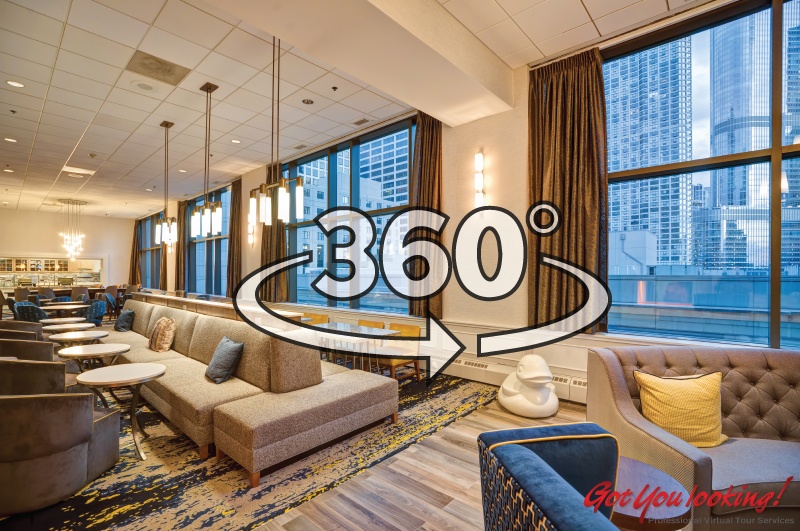
With so many hotels competing for business, virtual tours can help yours stand out. Virtual tours increase user engagement and offer unique insight and perspective into your accommodations.
Travelers rely on digital media throughout the booking process and offering this feature may determine if a guest will book directly or not.
We have recommendations on camera equipment, software, lighting and setting the stage here.
Have the Right Equipment to Create a Virtual Tour
Of course, you can hire professional photographers, but with a little investment and practice, you can create and promote your own tours. This will allow you greater flexibility, and the ability to regularly create multiple tours to keep your images current.
First, you will need a 360º angle camera to capture the full panoramic view. Most cameras with 360-angle capabilities will do the job, but the Garmin Virb 360 well reviewed. At $500 it’s fairly affordable and provides a nice picture quality resolution (4K Spherical Stabilization).
Additional 360-angle Cameras to Consider
- Insta360 One X ($400)
- Ricoh Theta V ($400)
- GoPro – Fusion ($300)
Get Virtual Tour Software
You will need to purchase virtual tour software. Costs vary from free to $8/monthly to $12 per tour, and up. This software is required to render (create a file) with a user-friendly and web-friendly format. These are some of the popular options:
- Roundme – One unique feature of this software is that it allows you to create “portals”, which means it gives the user the option to view a specific point in the room, for example allowing users to check out the balcony view of a hotel room.
- Mazipano – is a free open source virtual tour software. Although this software does not have the same “portal” feature as Roundme, it does allow the user to zoom in at a specific area of the panoramic photo.
We recommend you visit these sites and check out their demos.
Also, https://www.capterra.com/virtual-tour-software/, is a helpful site for reviews, feature and price comparisons.
Things to Consider Before You Start Creating Virtual Tours
Do the demos and tutorials. Some software packages offer demos on their website and you can often find more detailed tutorials with a quick search on YouTube.
Practice. Invest a little time determining what techniques produce the highest quality results. Find what makes your hotel unique and highlight it, whether it’s your bright lobby atrium, your cozy bar or your spacious conference rooms.
Best practices:
- Make sure the camera is leveled correctly – Ideally, you want to set the camera at 5-foot height level. This allows the user to get an average sense of the room height and not come off as being too large or too small. Many cameras will come with a tri-pod, but if not, invest in one.
- Determine the best lighting – Avoid glaring light beams, figures or objects that are backlit, rooms that are too dark to get any detail. Aim for natural lighting where possible. Some software allows for editing options to enhance some imagery for detail.
- Limit yourself to several panoramic views – Focus the virtual tours so the user gets the feeling of a walk-through. Include popular areas like restaurants, bars, pool, or spa, but don’t overdo it. There is usually no real need to see restrooms or parking lots (unless you have really special ones).
Virtual tours will create a sense of value and highlight the care you have for your lodging establishment.
Virtual hotel room and facility tours provide transparency and build trust with your guests. They also give consumers a sense of control and encourage their curiosity.
And as a bonus, websites with virtual tours are viewed approximately 10 times longer than those without. Increased engagement betters Google quality scores and therefore improves your search rankings.
Reference URLs:
- https://blog.capterra.com/how-to-create-a-hotel-virtual-tour/
- https://www.wikihow.com/Make-a-Virtual-Tour
- https://seo-hacker.com/virtual-tours-business/
- https://medium.com/updates-from-vizor/13-best-practices-for-building-a-360-tour-on-the-web-8cc1c2b34b9b

